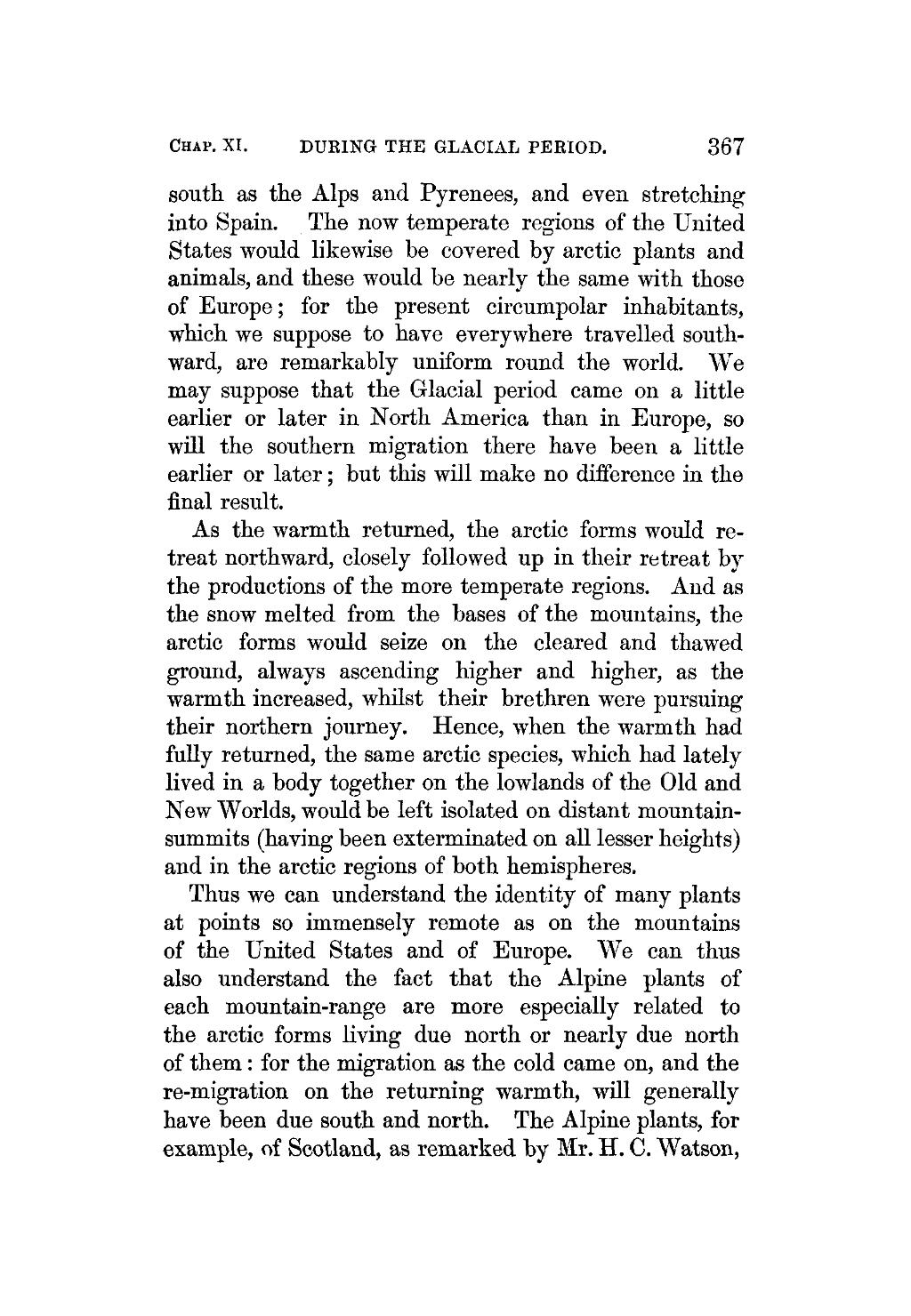south as the Alps and Pyrenees, and even stretching into Spain. The now temperate regions of the United States would likewise be covered by arctic plants and animals, and these would be nearly the same with those of Europe; for the present circumpolar inhabitants, which we suppose to have everywhere travelled southward, are remarkably uniform round the world. We may suppose that the Glacial period came on a little earlier or later in North America than in Europe, so will the southern migration there have been a little earlier or later; but this will make no difference in the final result.
As the warmth returned, the arctic forms would retreat northward, closely followed up in their retreat by the productions of the more temperate regions. And as the snow melted from the bases of the mountains, the arctic forms would seize on the cleared and thawed ground, always ascending higher and higher, as the warmth increased, whilst their brethren were pursuing their northern journey. Hence, when the warmth had fully returned, the same arctic species, which had lately lived in a body together on the lowlands of the Old and New Worlds, would be left isolated on distant mountain-summits (having been exterminated on all lesser heights) and in the arctic regions of both hemispheres.
Thus we can understand the identity of many plants at points so immensely remote as on the mountains of the United States and of Europe. We can thus also understand the fact that the Alpine plants of each mountain-range are more especially related to the arctic forms living due north or nearly due north of them: for the migration as the cold came on, and the re-migration on the returning warmth, will generally have been due south and north. The Alpine plants, for example, of Scotland, as remarked by Mr. H. C. Watson,

